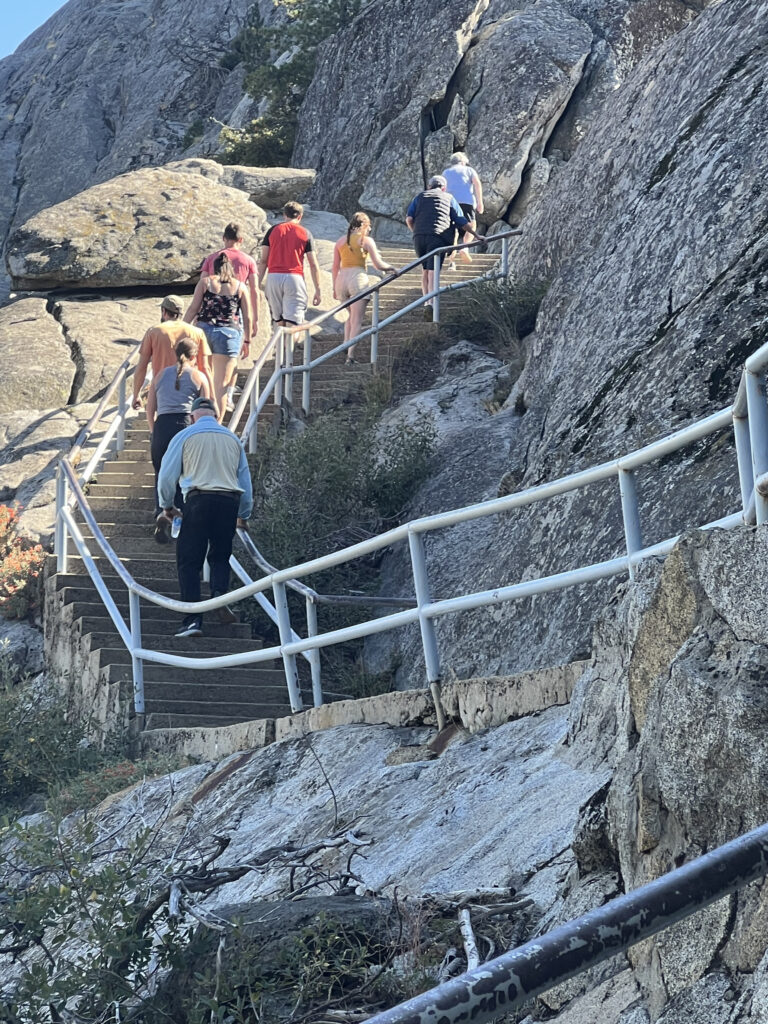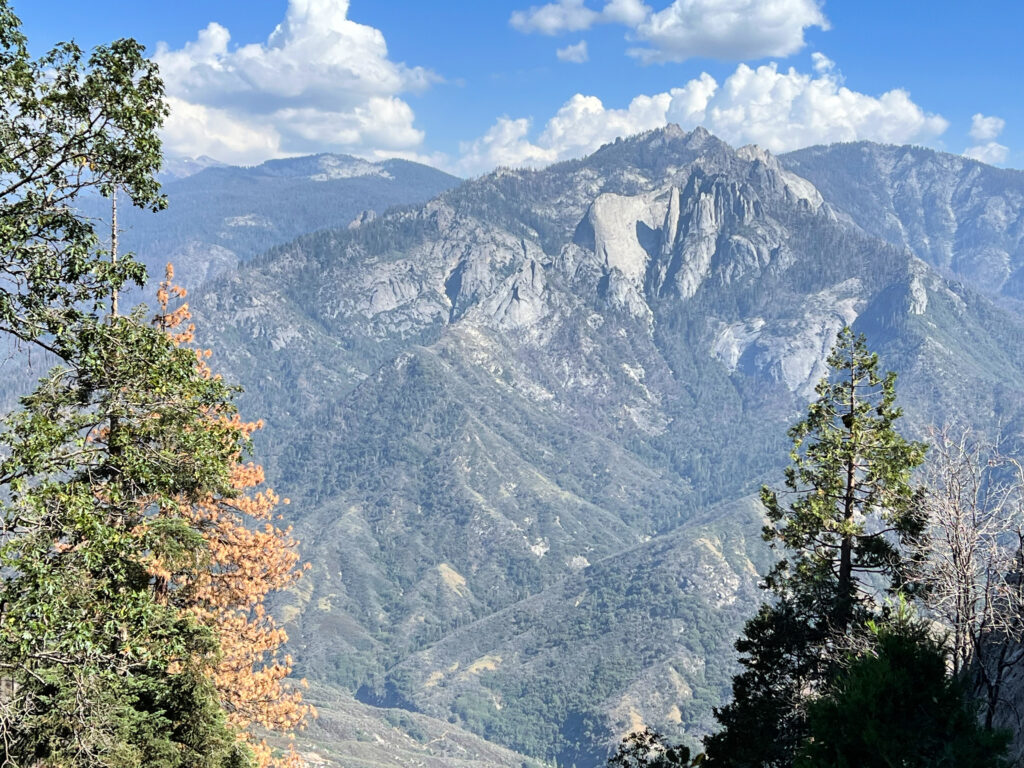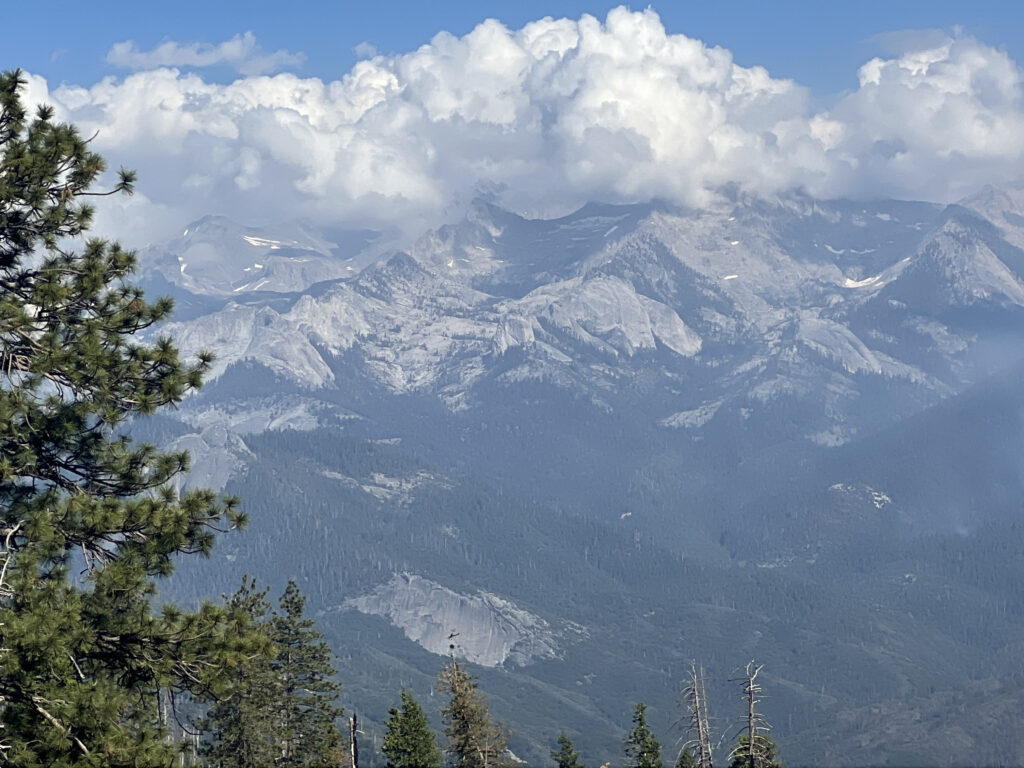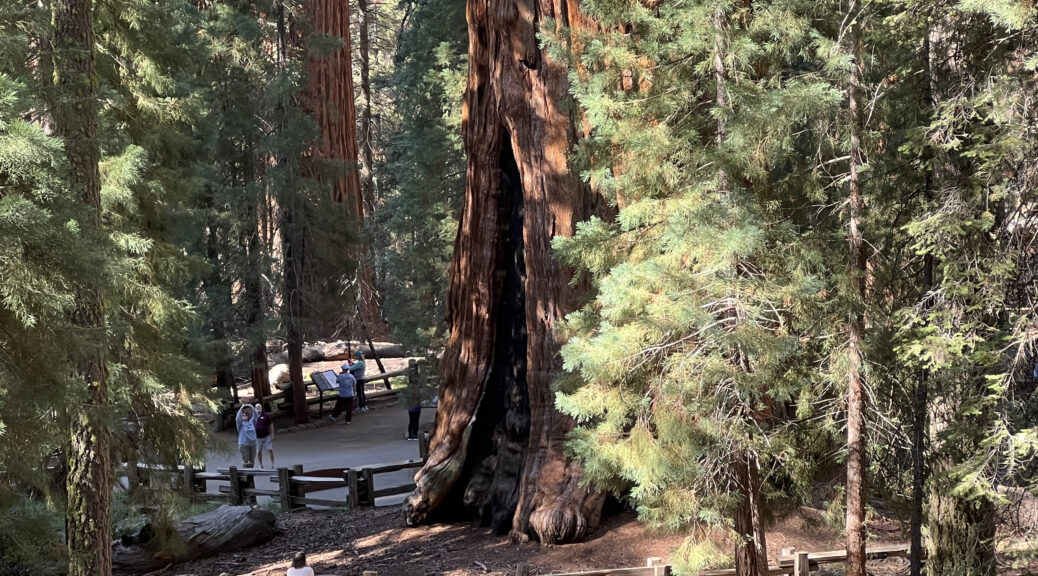
Sequoia National Park
As part of our Tauck tour, we drove to Sequoia and Kings Canyon National Parks. They are adjacent to each other but became national parks at different times so have different names. They have been jointly managed since 1943. Sequoias grow in both parks.
Giant sequoias grow on the western slopes of the Sierra Nevada Mountains, between 4,000 and 8,000 feet in elevation. They are closely related to the coast redwoods we saw at Muir Woods, but there are differences. Sequoias are not as tall as the redwoods but they are larger in bulk. On average, the coast redwood is 379 feet tall while the giant sequoias grow to about 311 feet. The redwoods have a diameter of about 22 feet at chest height while the sequoias have a diameter of about 40 feet. Sequoias also have thicker bark at 31 inches compared to the redwood’s bark of 12 inches. The breadth of the sequoias can be seen in the second picture, with my husband and I standing in front of it as a reference. Both redwoods and sequoias are beautiful and majestic in their own right.
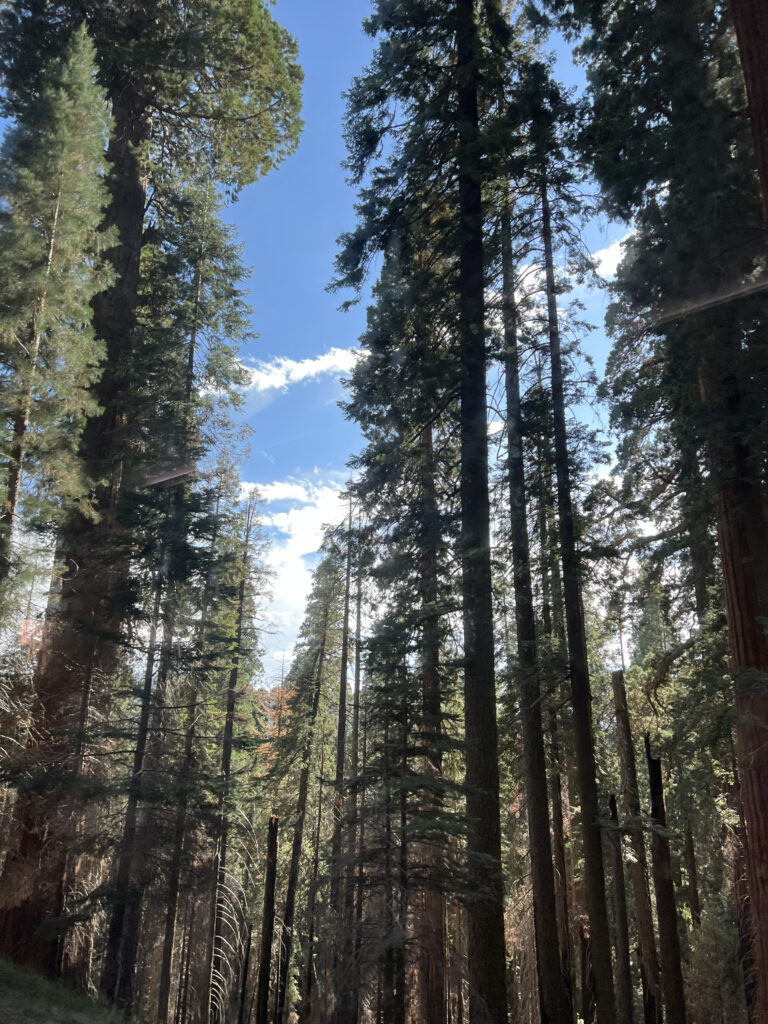
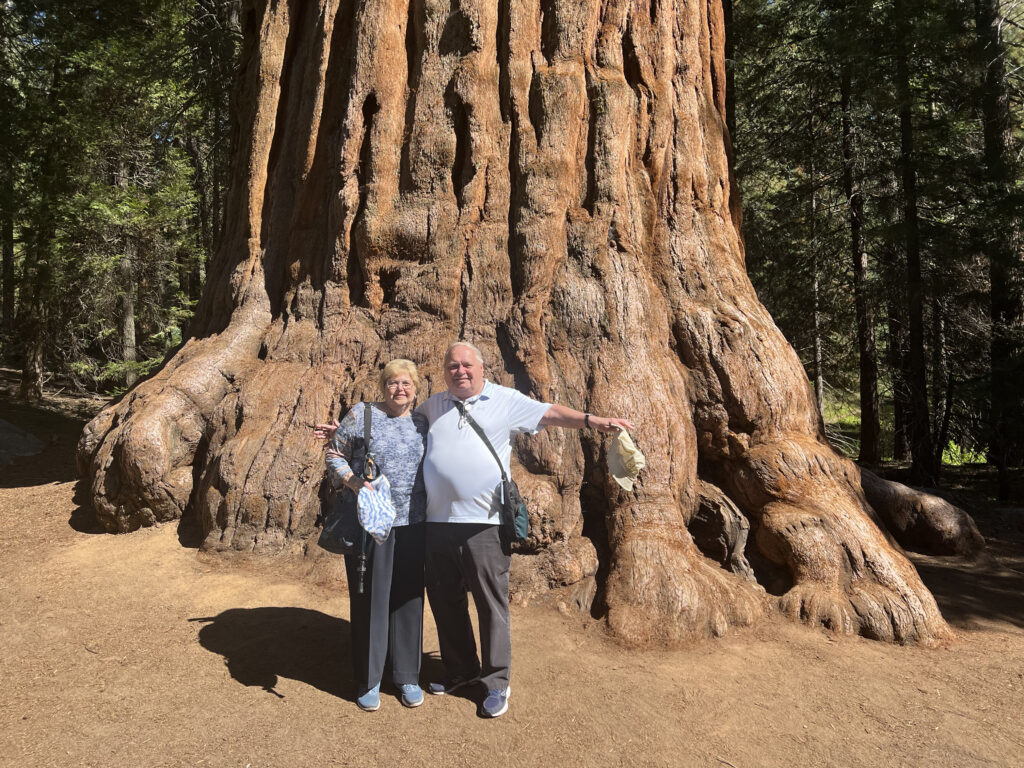
We stayed in Wuksachi Lodge inside Sequoia National Park. We were fortunate to be on park property … and luckily, we only saw one bear!
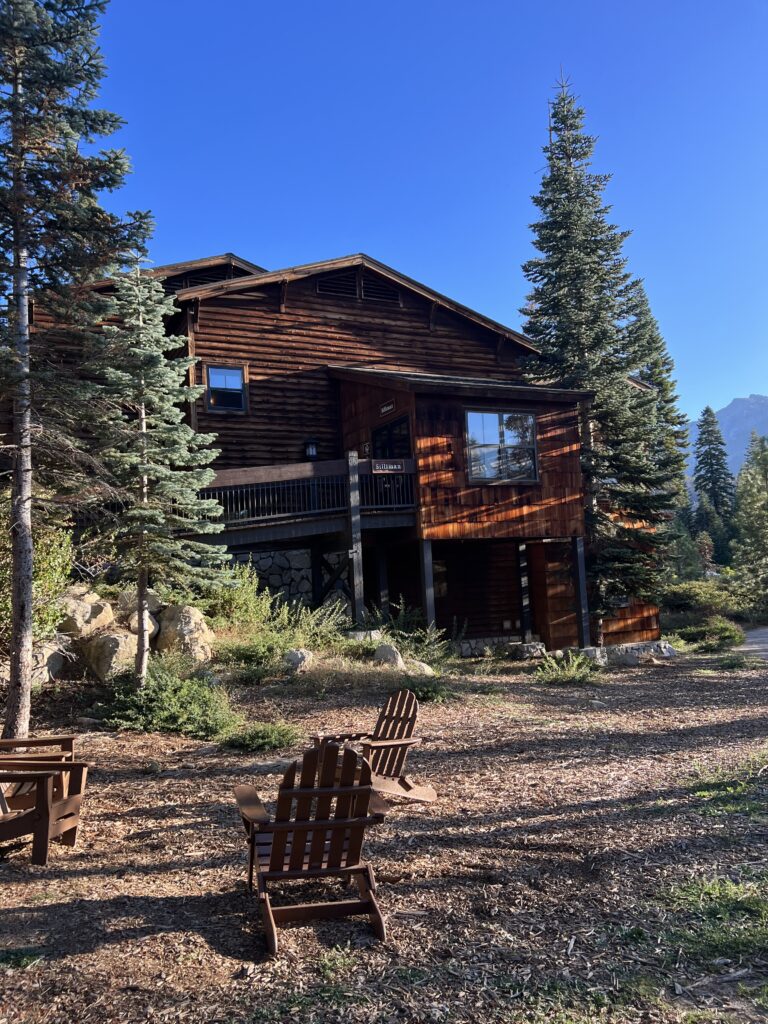

We saw rocks, called erratics, scattered in several places throughout the park. They are evidence of the glaciers that were here thousands of years ago. The glaciers formed canyons and are responsible for the lakes, rivers and valleys that are part of the landscape today.
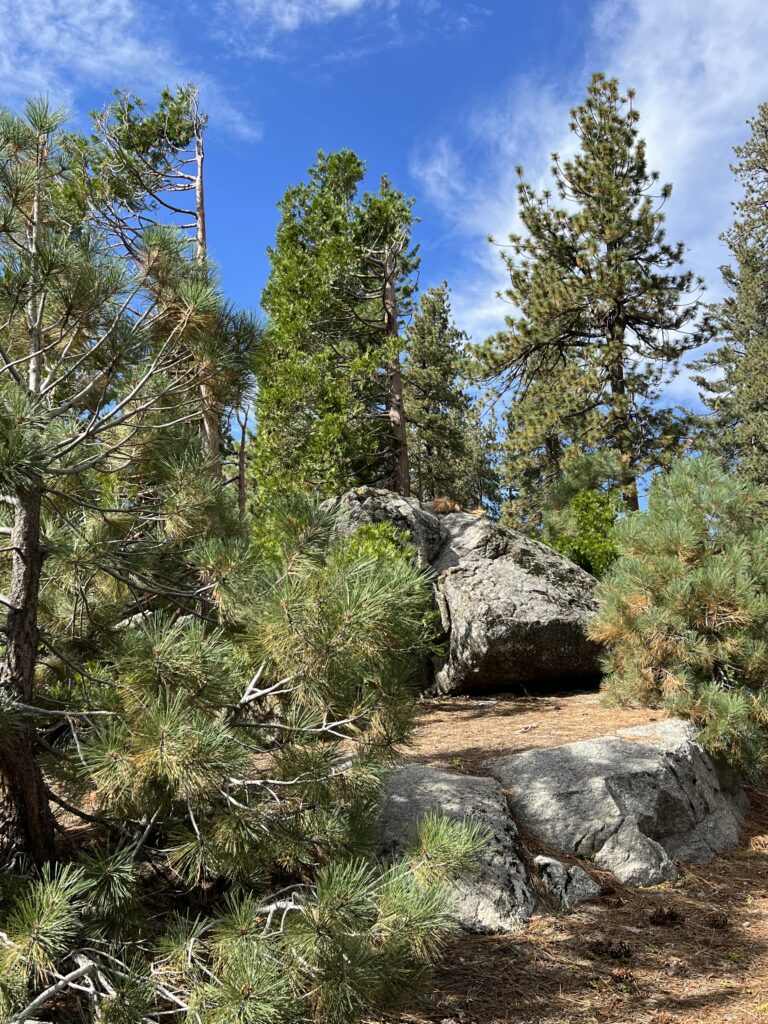
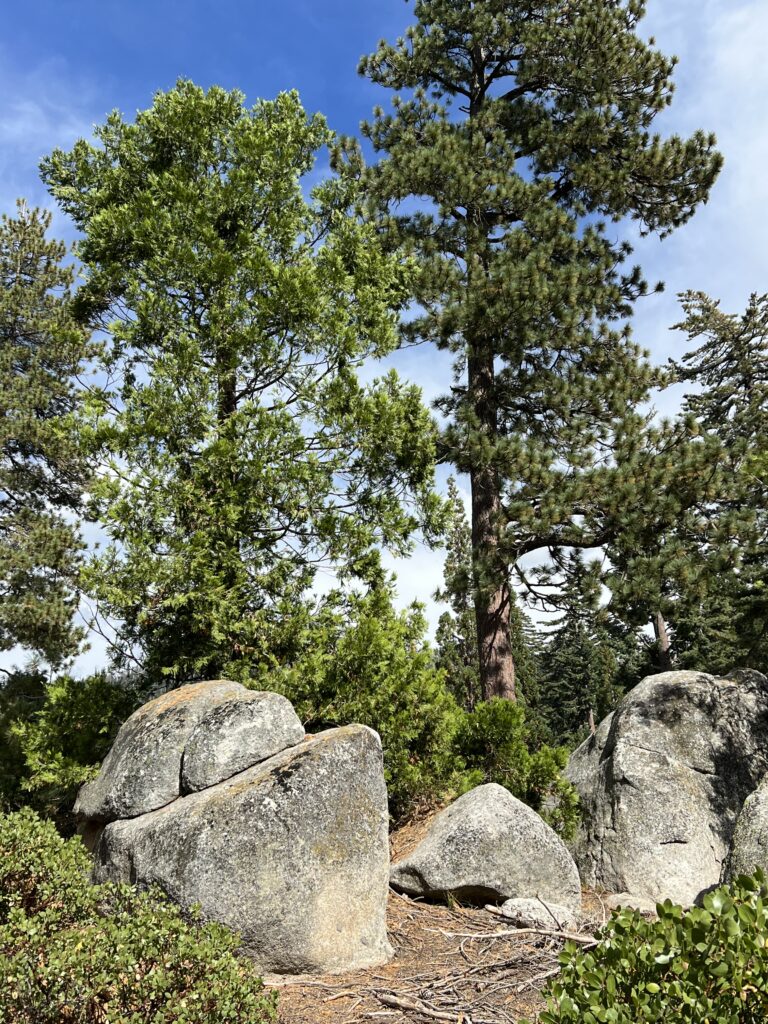
Our tour group broke into smaller groups to explore Sequoia National Park. In the morning, our group hiked on the Sherman Tree Trail where we would see the largest sequoia in the park, General Sherman. As we walked down the Sherman Tree Trail, we came across the life-sized footprint of the Sherman Tree’s trunk. It has a girth of 109 feet around at the ground.
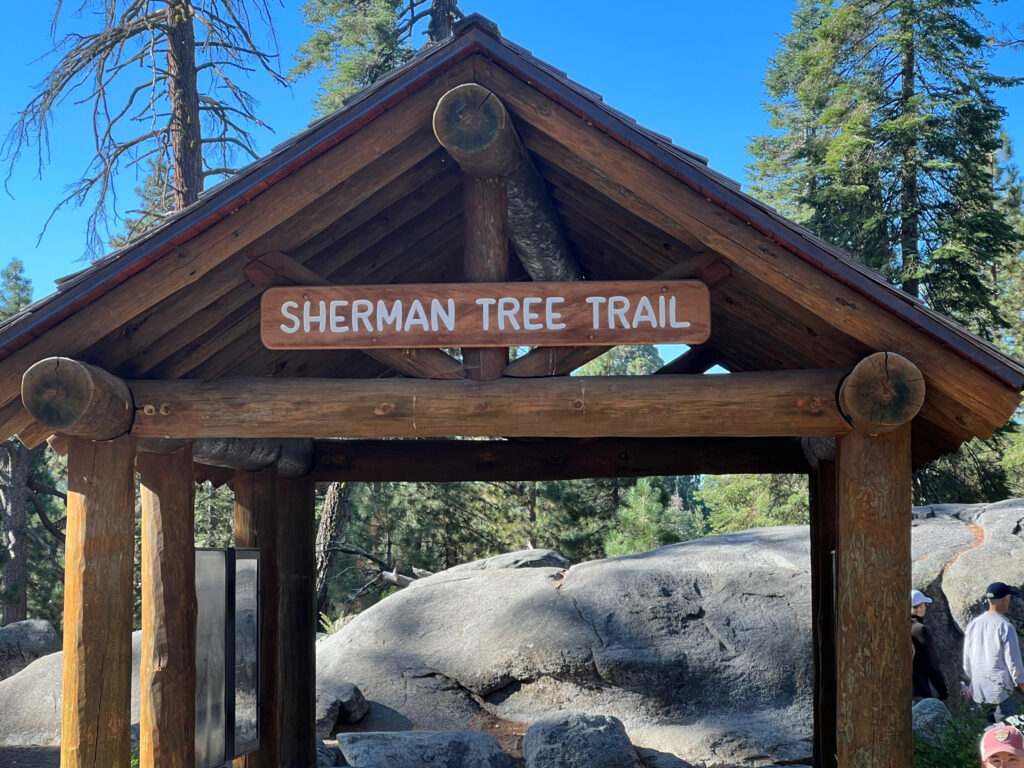
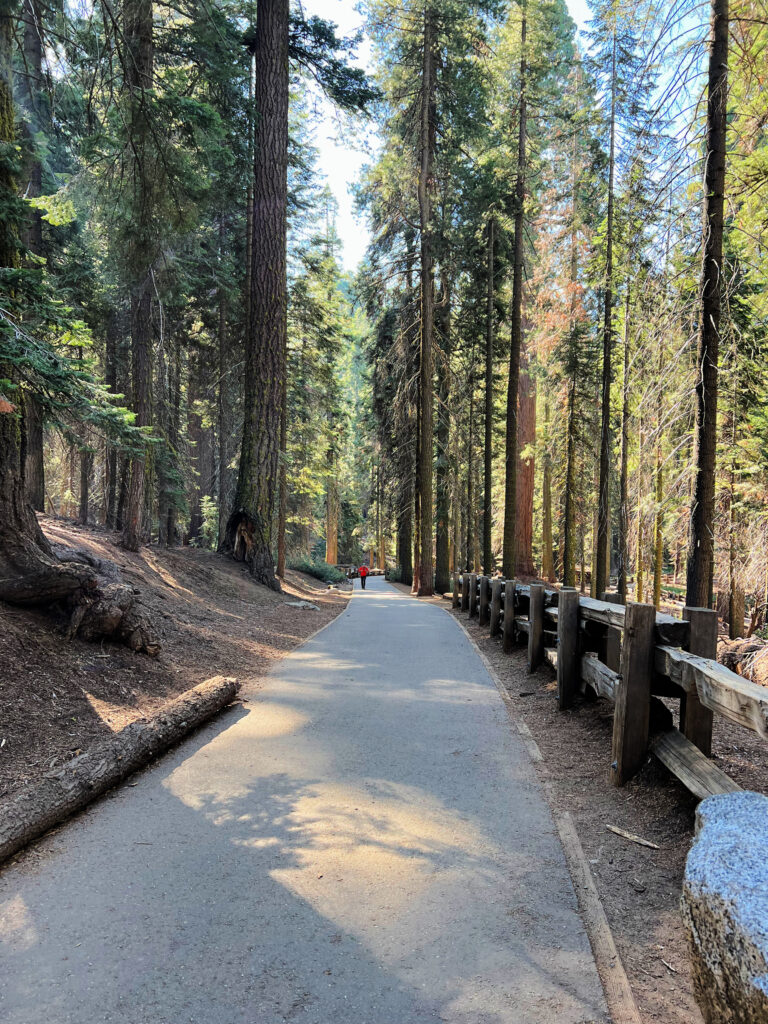
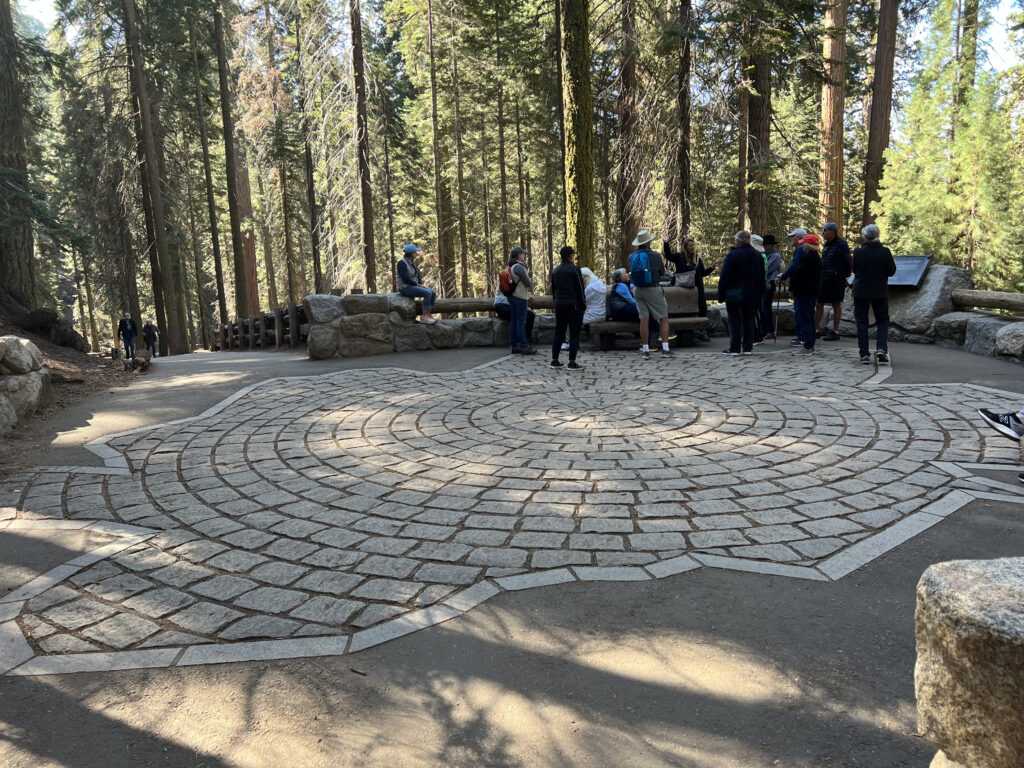
We also learned that naturally occurring fires are actually good for sequoias. Giant sequoia cones are serotinous, which means that fire on the forest floor causes the pine cones to dry out, open and release their seeds. In addition, fires at ground level burn grasses and plants. When fires burn this material, the flames can release nutrients stored in dead plants. The ash from these fires can be good for new plants to grow which spawns additional sequoia trees. The thick trunk also enables the tree to survive despite the fire scar. Unfortunately, we also saw the results of fires that were deliberately set as depicted in the second picture.
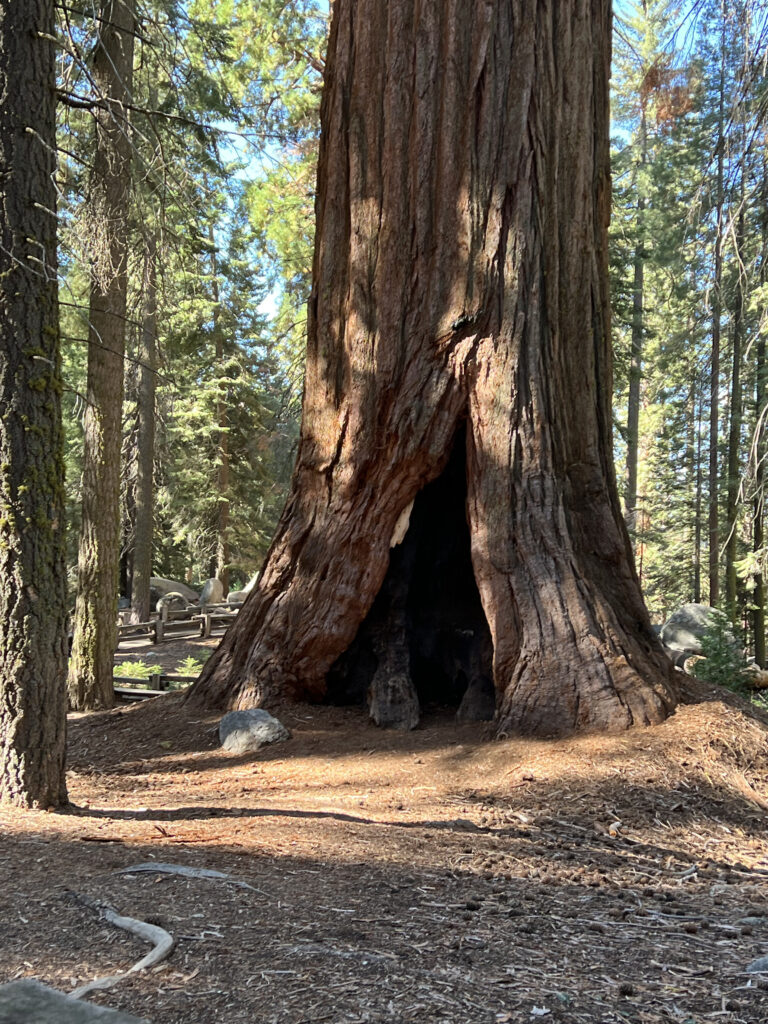
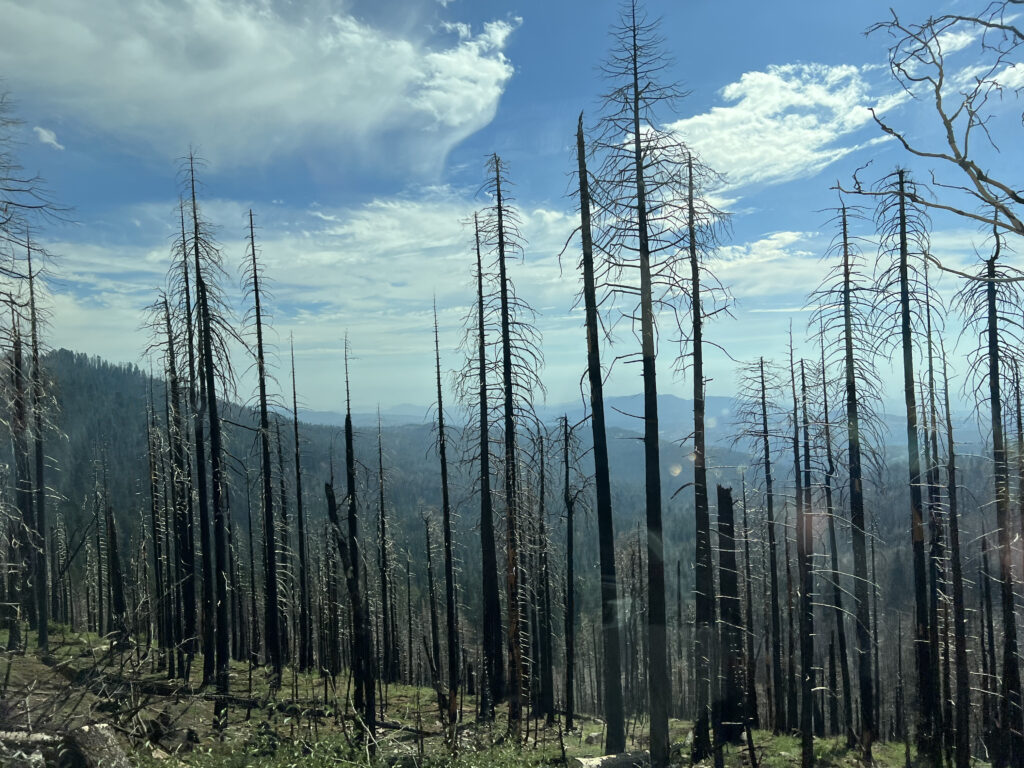
We continued down the trail and made our way to the General Sherman Tree. The information that follows is from a placard near the tree.
Its (the General Sherman Tree’s) claim to fame as the biggest tree in the world comes from the volume of its trunk. A few other tree trunks are bigger around. Some trees are taller. But no other tree has more wood in its trunk than the Sherman tree. The Sherman Tree’s top is dead, so the tree’s trunk no longer gets taller. However, its volume keeps increasing. Each year the trunk grows wider, adding enough wood to equal another good-sized tree.
National Park Service
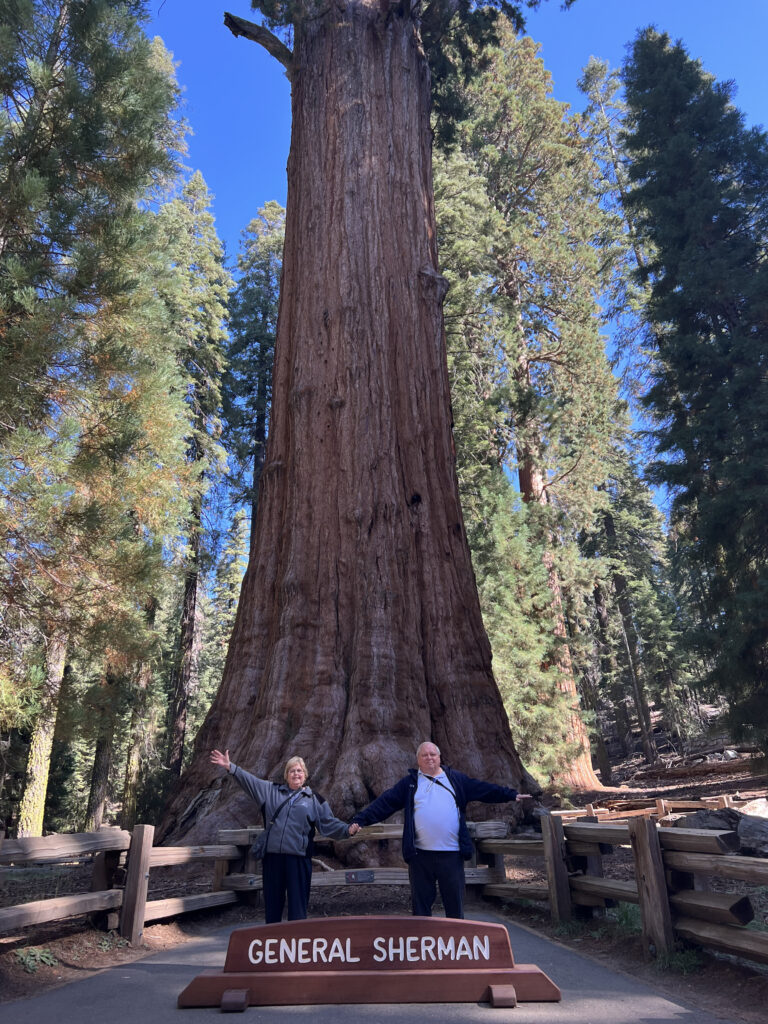
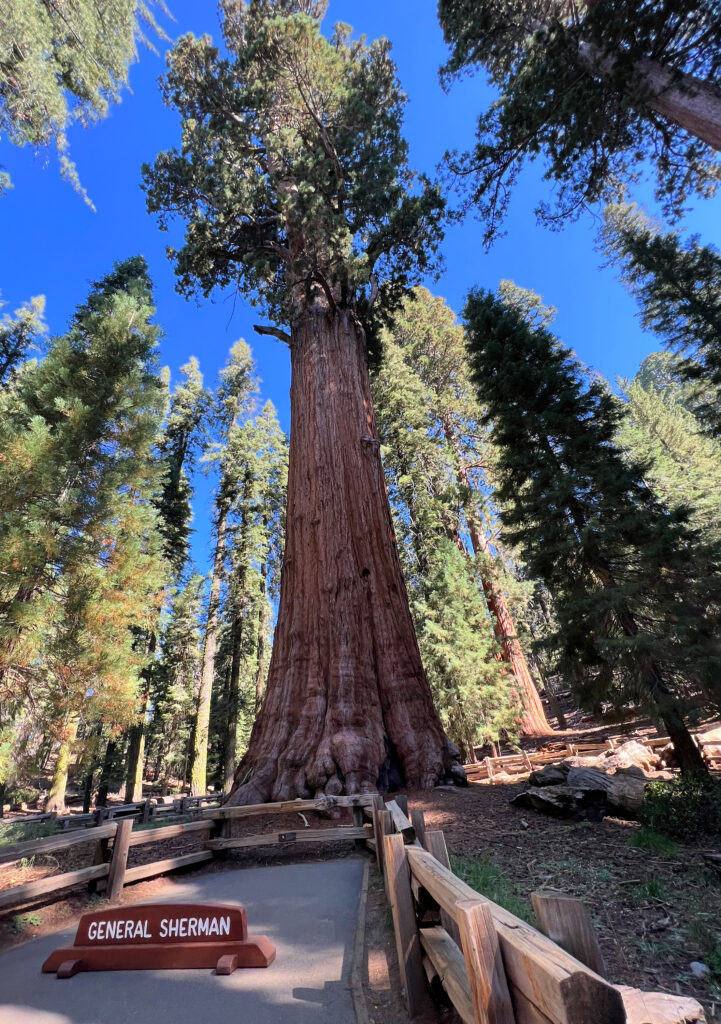
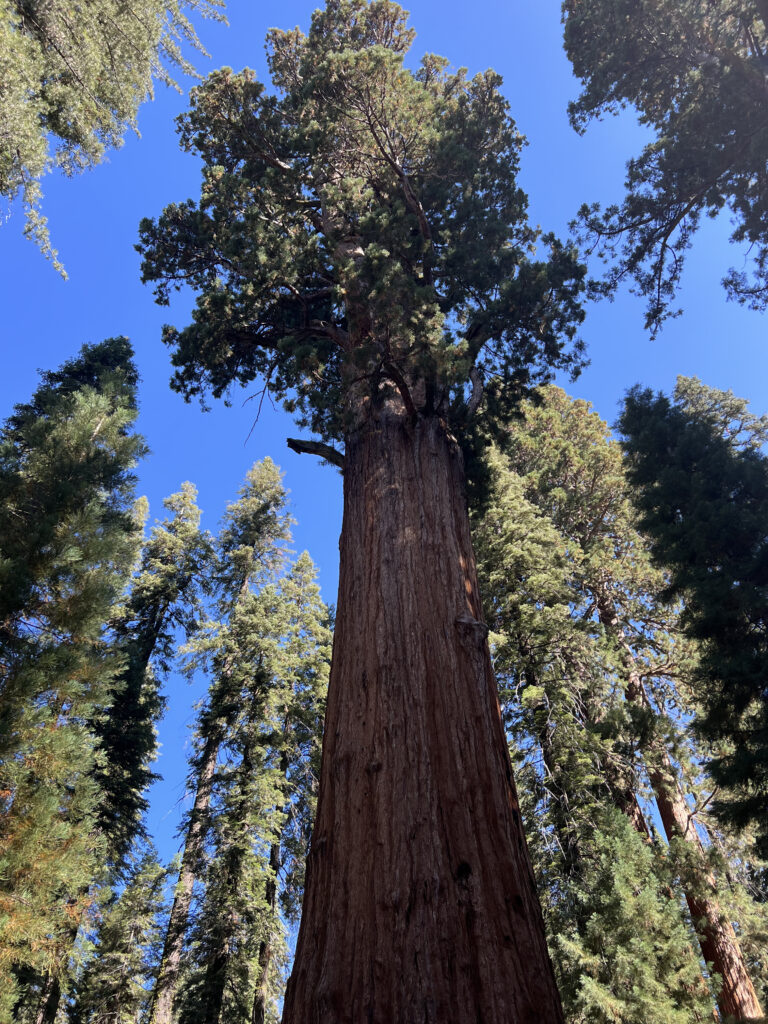
In the afternoon, we went with a local guide to another part of the park. In this area, sequoias encircled a meadow. Our guide explained that the roots of the sequoias extended into the meadow and it was from there they got the water they needed to survive. We were told that a mature Giant Sequoia can use 500-800 gallons of water every day during the summer. Our guide told us that a few years ago, a sequoia had fallen. Everyone ran to see it and saw gallons of water gushing from the tree.
Next, our guide is standing near a small evergreen. This is actually a young sequoia. The evergreen will become the top of the tree as a large trunk grows. The trunk will significantly increase in diameter after the tree has reached its full height. The last picture shows another part of our group standing at the base of a sequoia. The perspective helped us appreciate the true size of the Giant Sequoias.
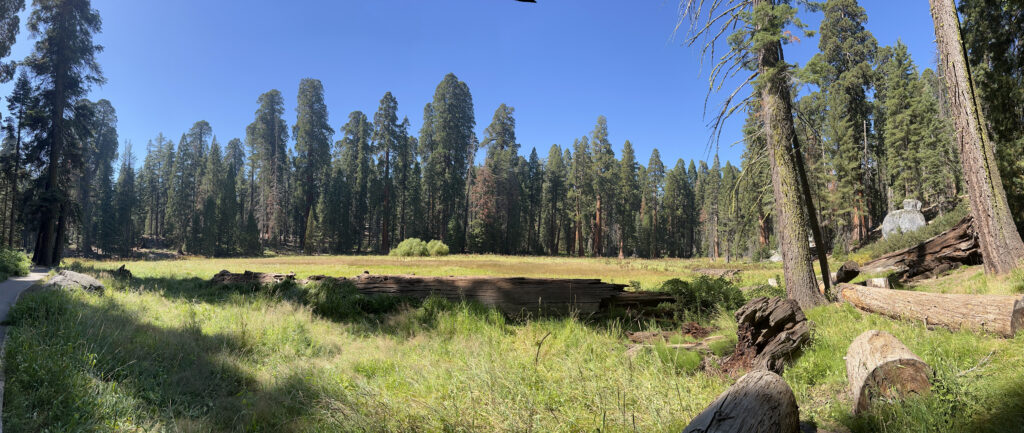
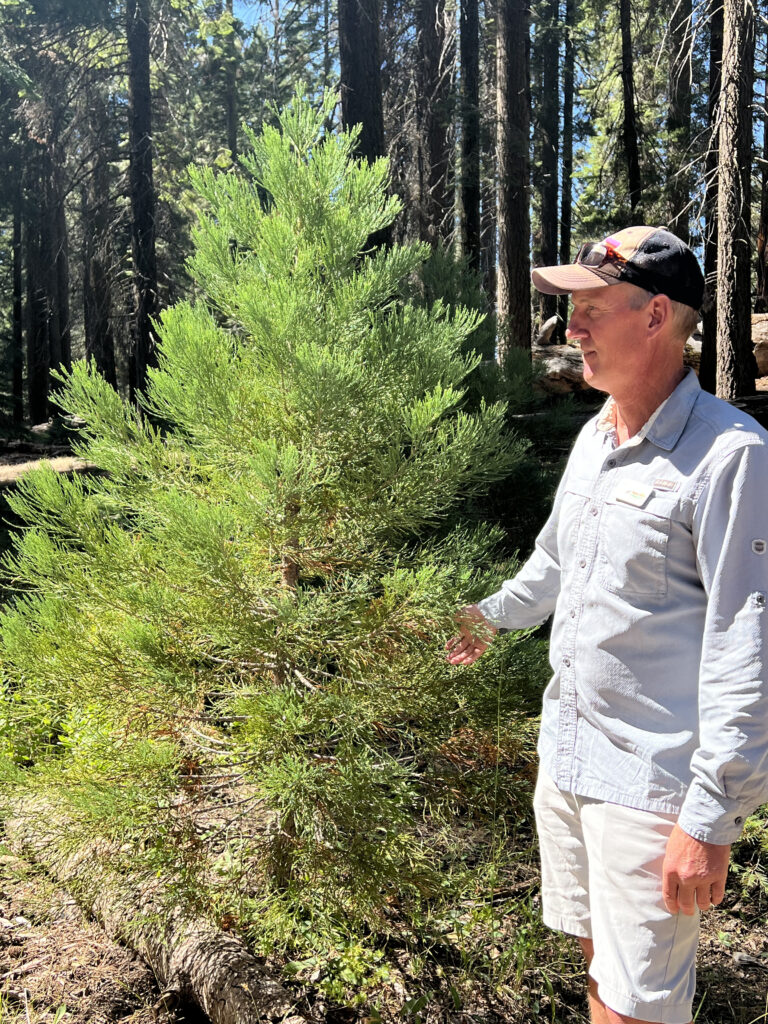
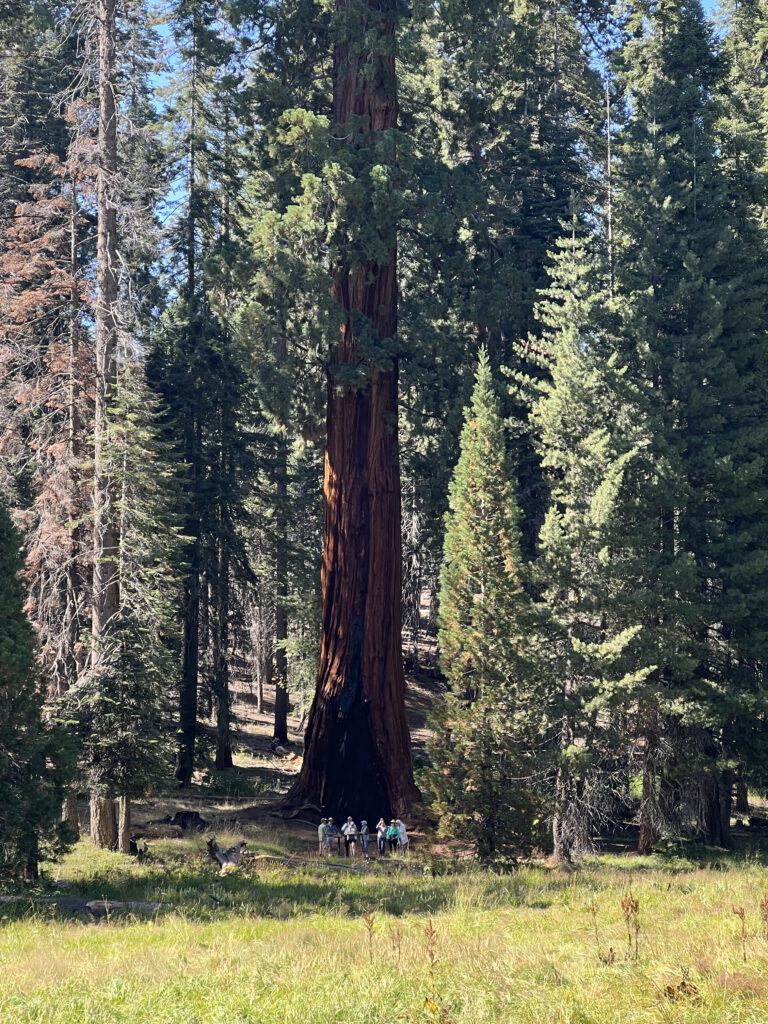
Here are just a few more of these beautiful trees.
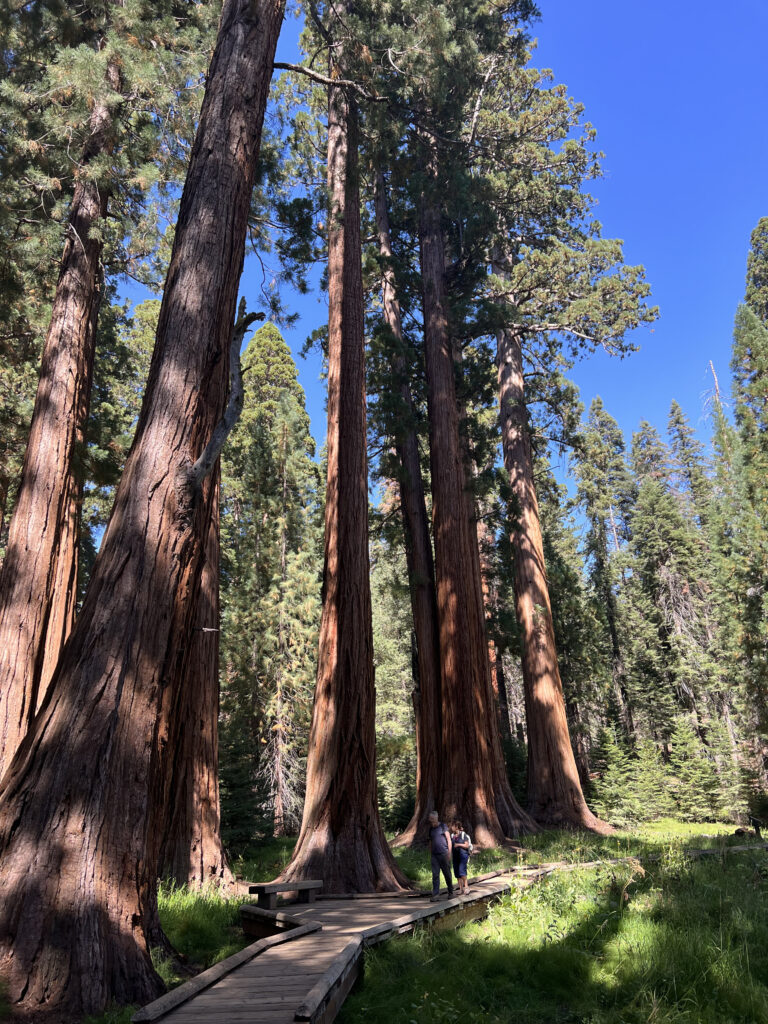
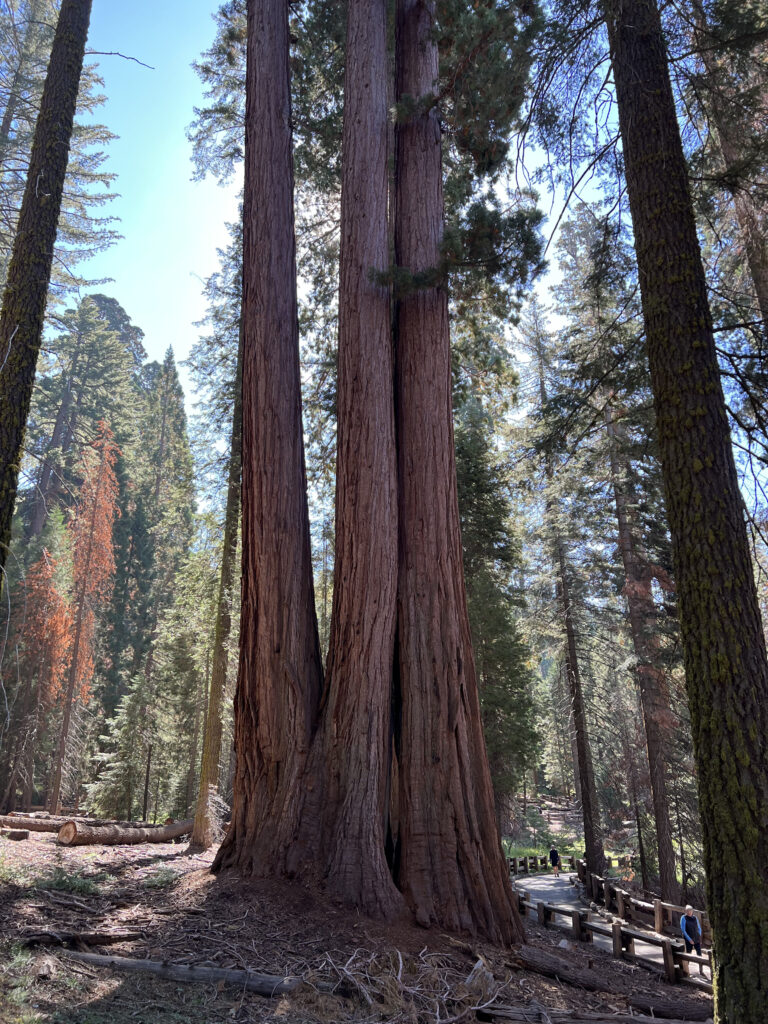
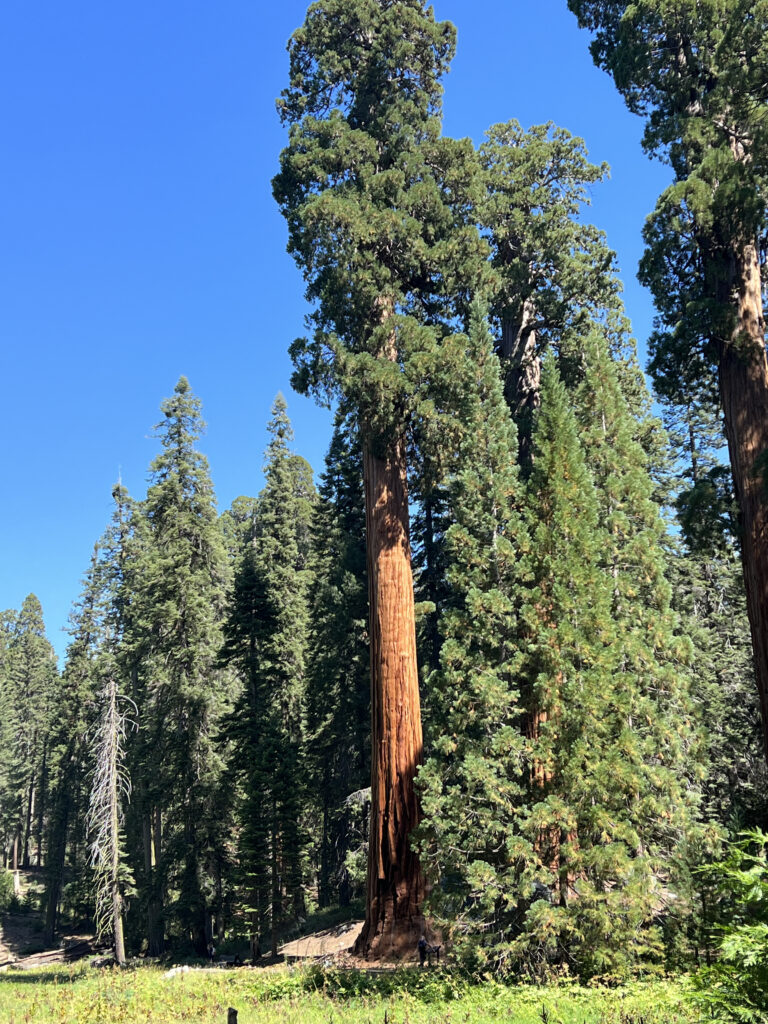
Our guide also drove us by a tree that had fallen on December 4, 1937. Its base diameter was 21 feet and it height was 275 feet. It was left where it fell and is now referred to as the “tunnel log.” The tunnel carved into it is 8 feet high and 17 feet high. While cars can drive through it, our van took the bypass.
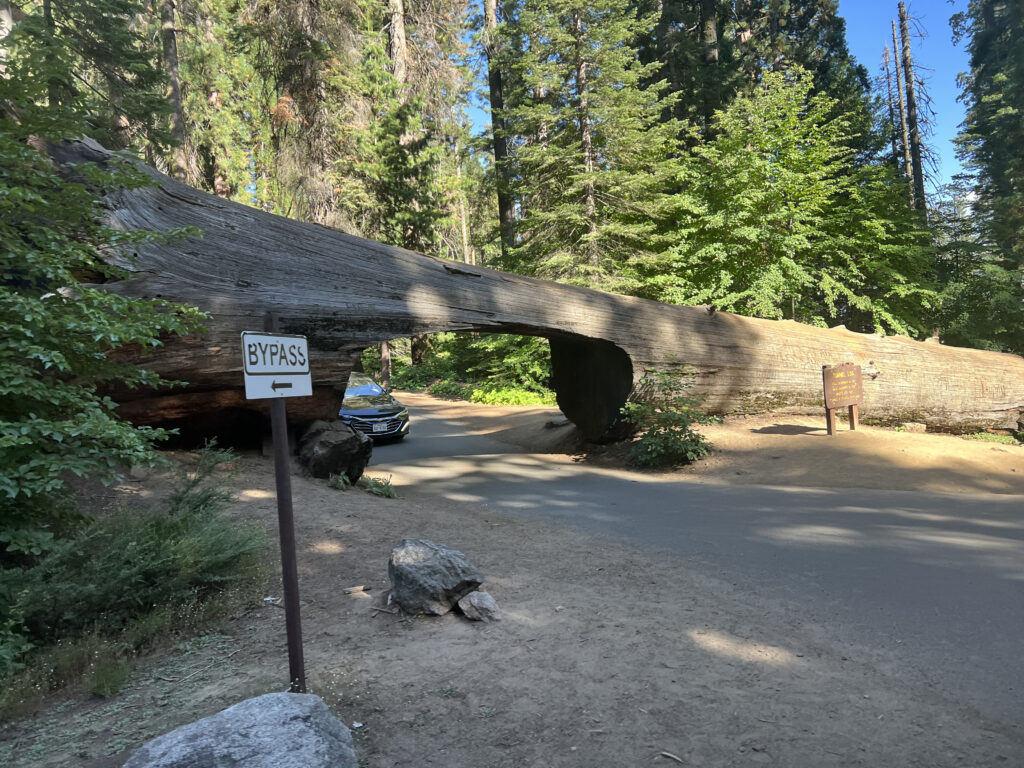
Before leaving Sequoia National Park, we climbed part way up Moro Rock, a granite dome. There were 350 steps at an altitude of 6,725 feet. My husband climbed about 100 steps and I did a few less. The climb gave us great views of the peaks of the Sierra Nevada Mountains.
